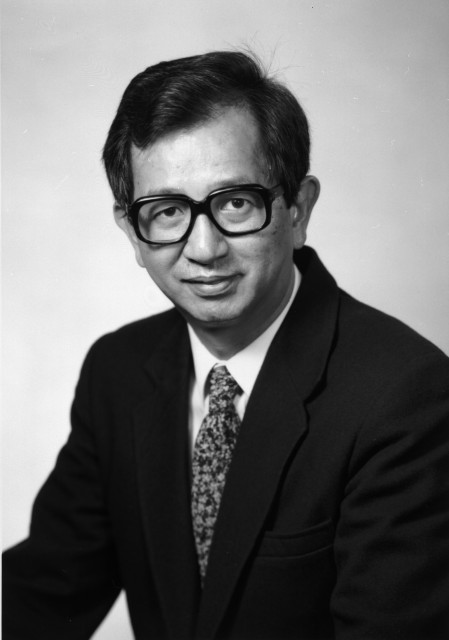Yuan Tseh Lee
1936-

Lee received the 1986 Nobel Prize in Chemistry, shared with Dudley R. Herschbach and John C. Polanyi (see portraits) for elucidating the collision dynamics of elementary chemical reactions. During a postdoctoral appointment at Harvard with Herschbach, Lee designed and built a technologically advanced "universal" machine with electron bombardment ionizer and mass spectrometer detector that moved the field of molecular beam kinetics into a new era in the study of reaction dynamics. Subsequent improvements set the standard for molecular beam instrumentation, and his laboratory rapidly became a mecca for studies of collision processes. Later, lasers and molecular beams were combined to understand various primary photochemical processes and the spectroscopy of ionic and molecular clusters.
Lee was born in Hsinchu, Taiwan, China and as a youth experienced the adversity of WWII and Japanese occupation. At the war's end he resumed formal schooling and received a B.S. from National Taiwan University (1959) and M.S. from Tsinghua University (1961). He then came to the U.S. and took his Ph.D. with Bruce Mahan at the University of California, Berkeley (1965). After the postdoctoral year with Herschbach he joined the University of Chicago faculty (1968). In 1974 he moved to the University of California, Berkeley, where he is currently Graduate Professor. Lee is a baseball enthusiast and often likens his molecular collision work to the various ways in which a batter strikes a baseball.
Lee's many honors besides the Nobel include the National Medal of Science (1986), the ACS Peter Debye Award in Physical Chemistry (1986) and the Royal Society's Faraday Medal (1992).
Sponsor: Chi-Kwong Chang
Location in chemistry building: Basement Floor; Elevator area South Wall; Sequence 1
Source: Professor Lee